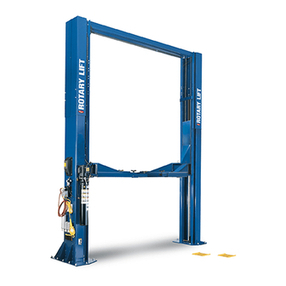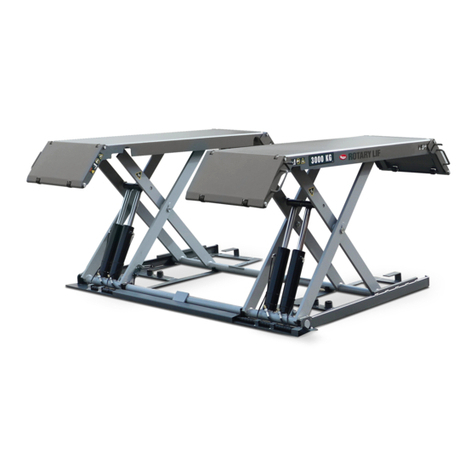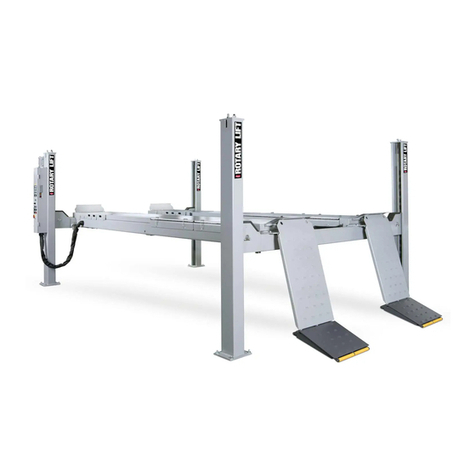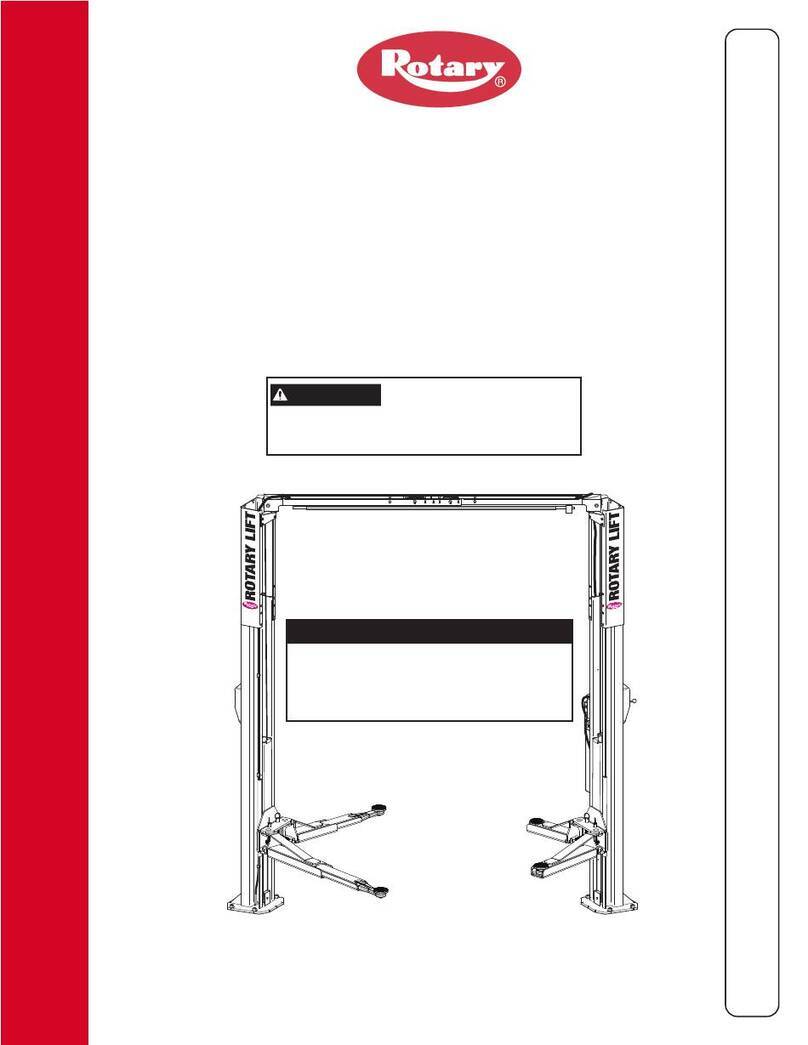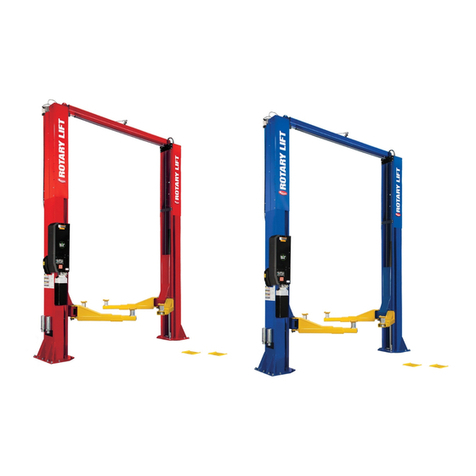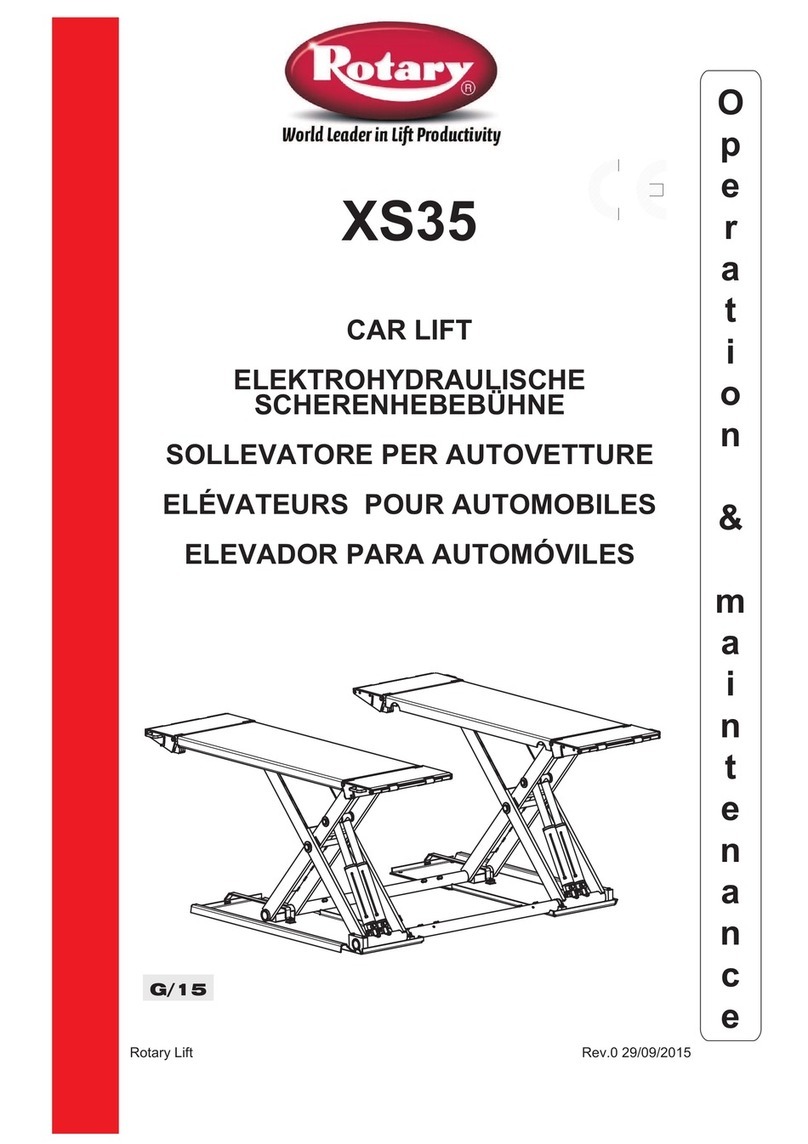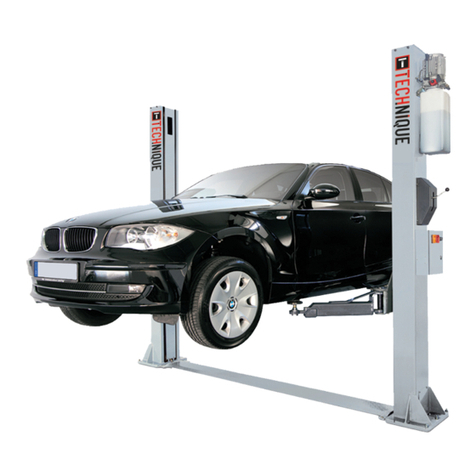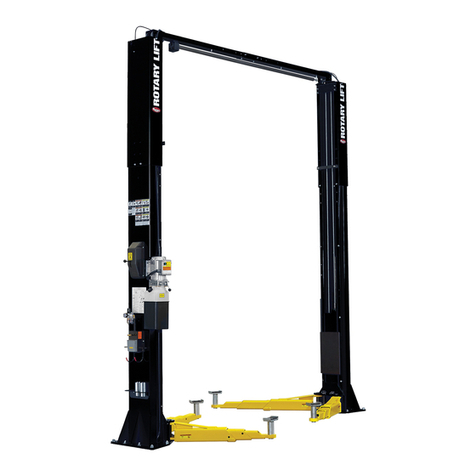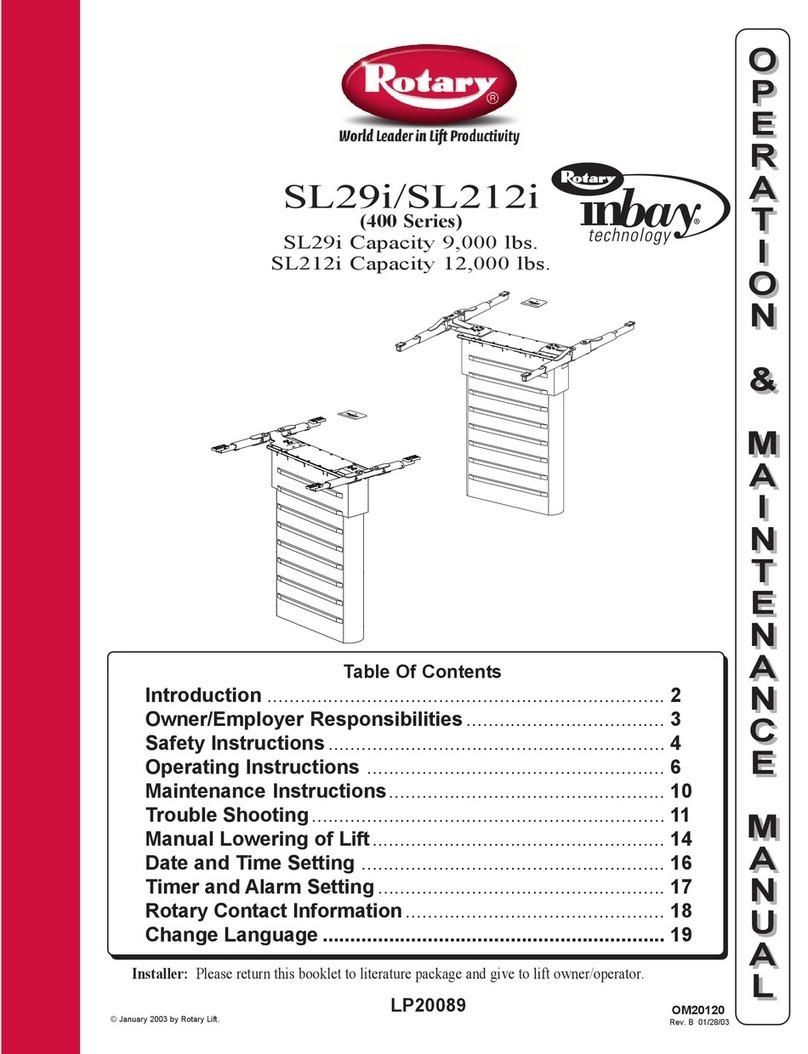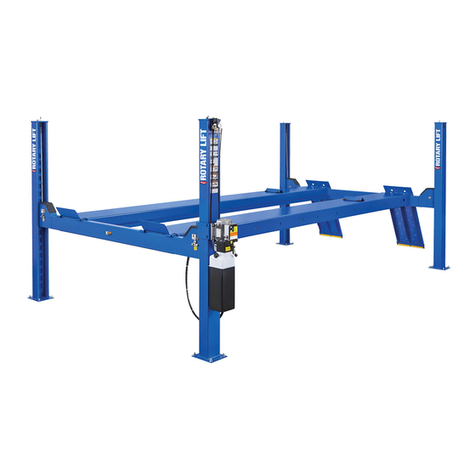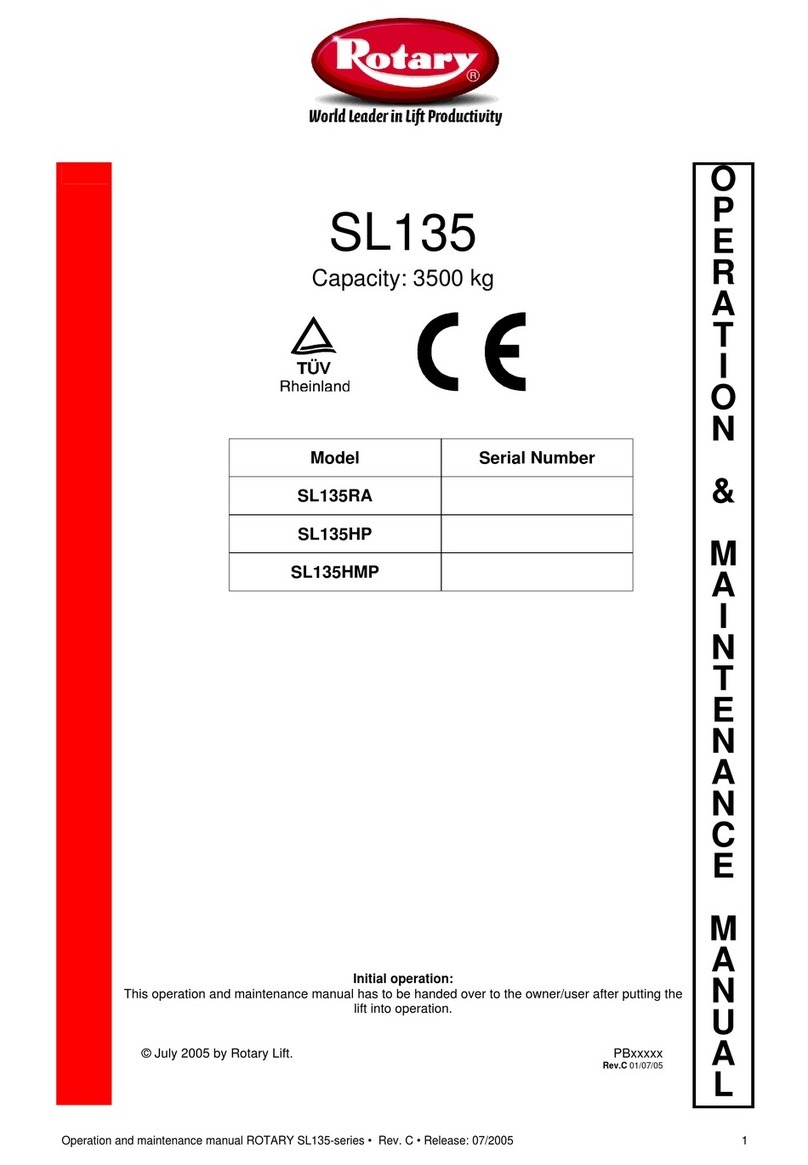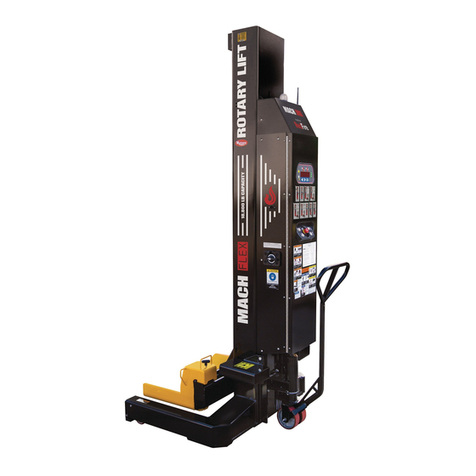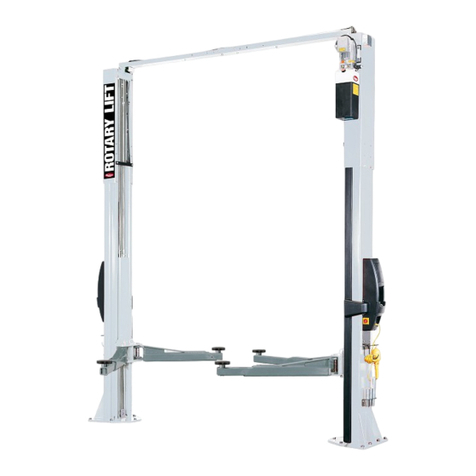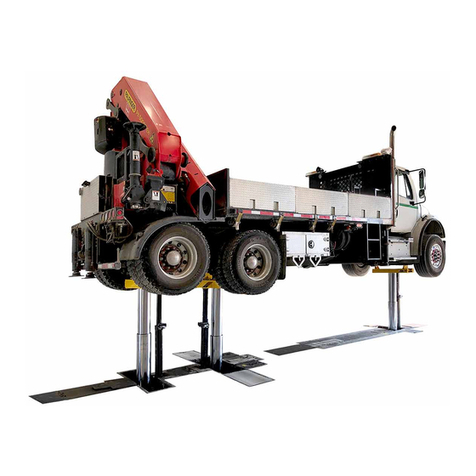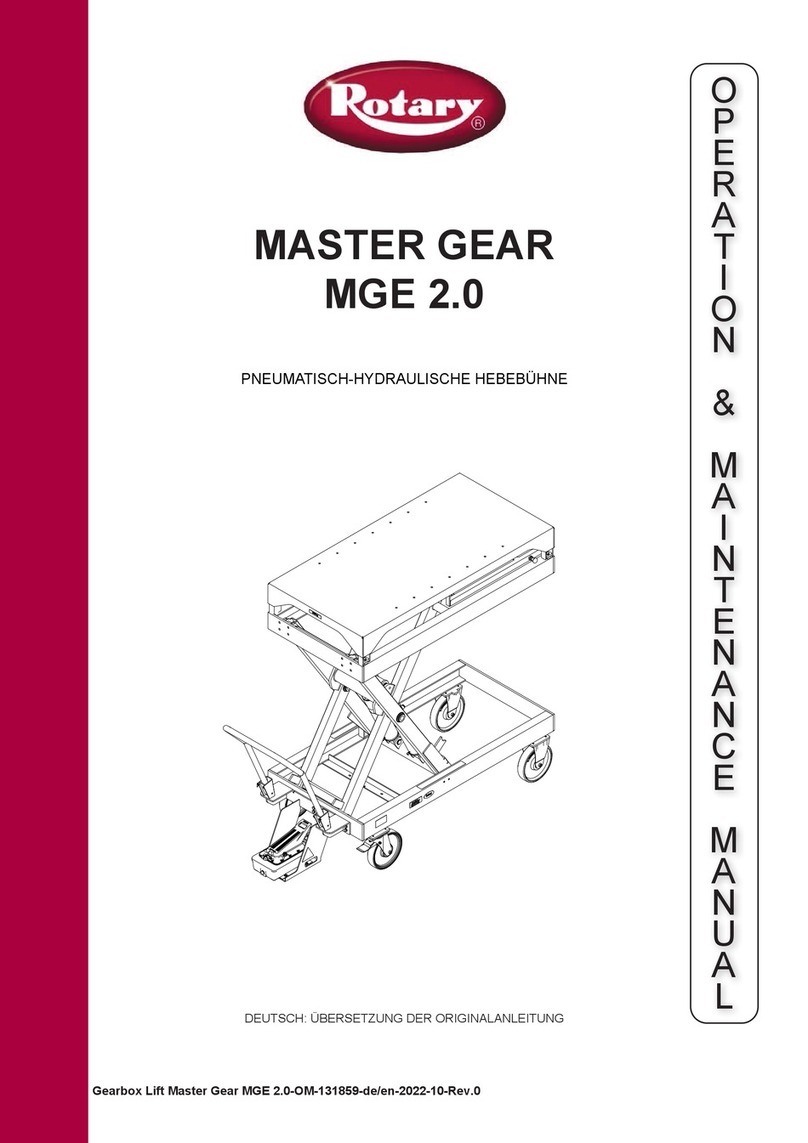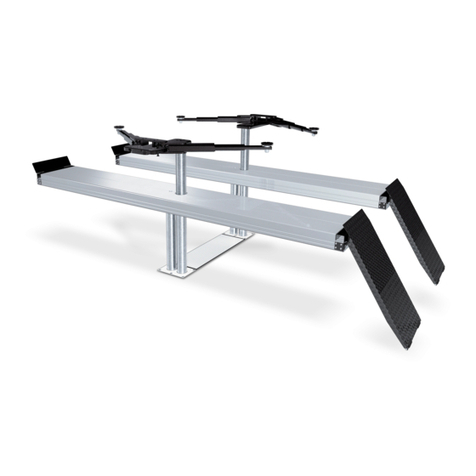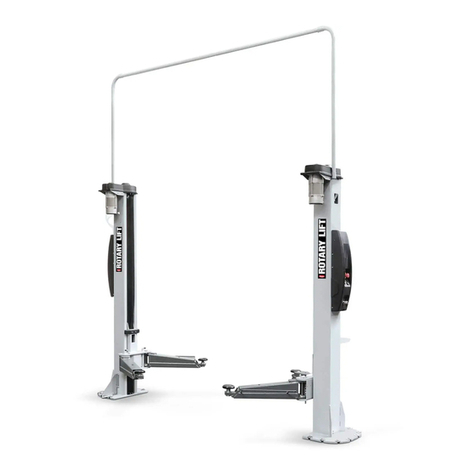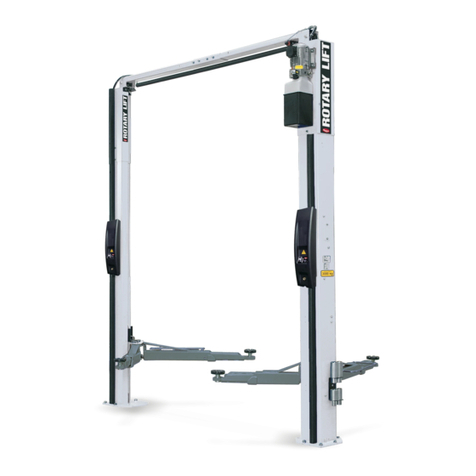4
CAP. 1
- INTRODUZIONE
IMBALLAGGIO - TRASPORTO
INTRODUZIONE
Questo manuale è stato scritto per il personale di officina
addetto all’uso del sollevatore (operatori) e per i tecnici
addetti alla manutenzione ordinaria e straordinaria. La lettu-
ra di questo manuale deve essere effettuata prima di qual-
siasi operazione sul sollevatore. Esso contiene informazioni
importanti per:
•La sicurezza delle persone (addette all’uso e alla
manuenzione ordinaria);
• La sicurezza del sollevatore;
• La sicurezza dei veicoli sollevati.
Il manuale è parte integrante del sollevatore e deve essere
conservato in luogo facilmente accessibile, in modo che l’o-
peratore possa consultarlo rapidamente in qualsiasi momen-
to. SI RACCOMANDA UNA ATTENTA LETTURA DEL CAPI-
TOLO “3” RIGUARDANTE LA SICUREZZA.
I ponti sollevatori “GEMINI” sono stati progettati e costruiti
rispettando:
Le DIRETTIVE EUROPEE 98/37/CE-73/23/CEE e
93/68/CEE-89/336/CEE.
Le NORME EUROPEE EN 291.1-EN 292.2- EN 294 - EN
349 - EN 1050 - EN 60204-1 - ETS 30 683 - EN 55022B -
EN 1493.
Tutte le operazioni sul sollevatore ed in particolare quelle di
trasporto, montaggio, installazione, manutenzione, revisio-
ne, spostamento, smantellamento ecc. devono essere esegui-
te da personale esperto e preventivamente autorizzato. Il
costruttore non risponde di alcun danno a persone, veicoli od
oggetti causato da un uso improprio del sollevatore.
Leggere attentamente le avvertenze contenute in questo
manuale prima di operare sul sollevatore.
Effettuare l’allacciamento pneumatico dal sollevatore
alla centralina di comando solo dopo avere messo in opera
gli impianti elettrici ed oleodinamici.
L’uso del sollevatore è destinato esclusivamente al solle-
vamento di autoveicoli fino alla portata indicata. È vietato
ogni uso improprio del sollevatore.
Provvedere al distacco del sollevatore dalla linea di ali-
mentazione prima di ogni intervento di manutenzione sia
ordinaria che straordinaria
L’installazione del sollevatore deve essere effettuata
rispettando le norme indicate.
Il mancato rispetto delle norme contenute nel presente
manuale, solleva il costruttore da ogni responsabilità.
CHAPTER 1
- INTRODUCTION
PACKING - TRANSPORT
INTRODUCTION
This manual was written for shop technicians ( car lift opera-
tors ) and maintenance technicians. Before operating these
car lifts, please read these instructions completely. This
manual gives helpful information about:
• Safety of people;
• Safety of the car lift;
• Safety of lifted car.
This manual is considered to be a permanent part of the lift
and must be kept in an easily accessible place so that the
operator can find it and refer to it any time.A Particularly
careful reading of chapter 3 on safety is recommended.
All versions of “GEMINI” have been designed and built as
required by:
EUROPEAN RECOMMENDATIONS: EEC 98/37/CEE,
73/23/CEE, 93/68/CEE, 89/336/CEE.
EUROPEAN RULES: EN 291/1992, EN 292/1992, EN 294,
EN349, EN1050, EN 60204-1, EN 300683, EN 55022B -
EN 1493.
Only skilled and previously authorized technicians should be
allowed to carry out transport, assembling, setting, mainte-
nance, overhaul, moving, dismantling operations, etc. con-
cerning the lift. The manufacturer is not responsible for pos-
sible damage to people, vehicles and objects in the case that
said operations are carried out by unauthorized personnel or
the lift improperly used.
Read these instruction completely before operating the
lift.
Always start the hydraulic and electric system before the
pneumatic connection from the lift to the control box is car-
ried out.
The lift must be only used for vehicles up to the speci-
fied capacity. Any inproper use of this lift is strictly forbidden
Disconnect the lift from the main electric supply before
any extraordinary maintenance operation.
Lift installation must be carried out as specified by these
instructions.
The manufacturer is not liable for possible damage resul-
ting from failure to follow the instruction supplied with this
car lift.
